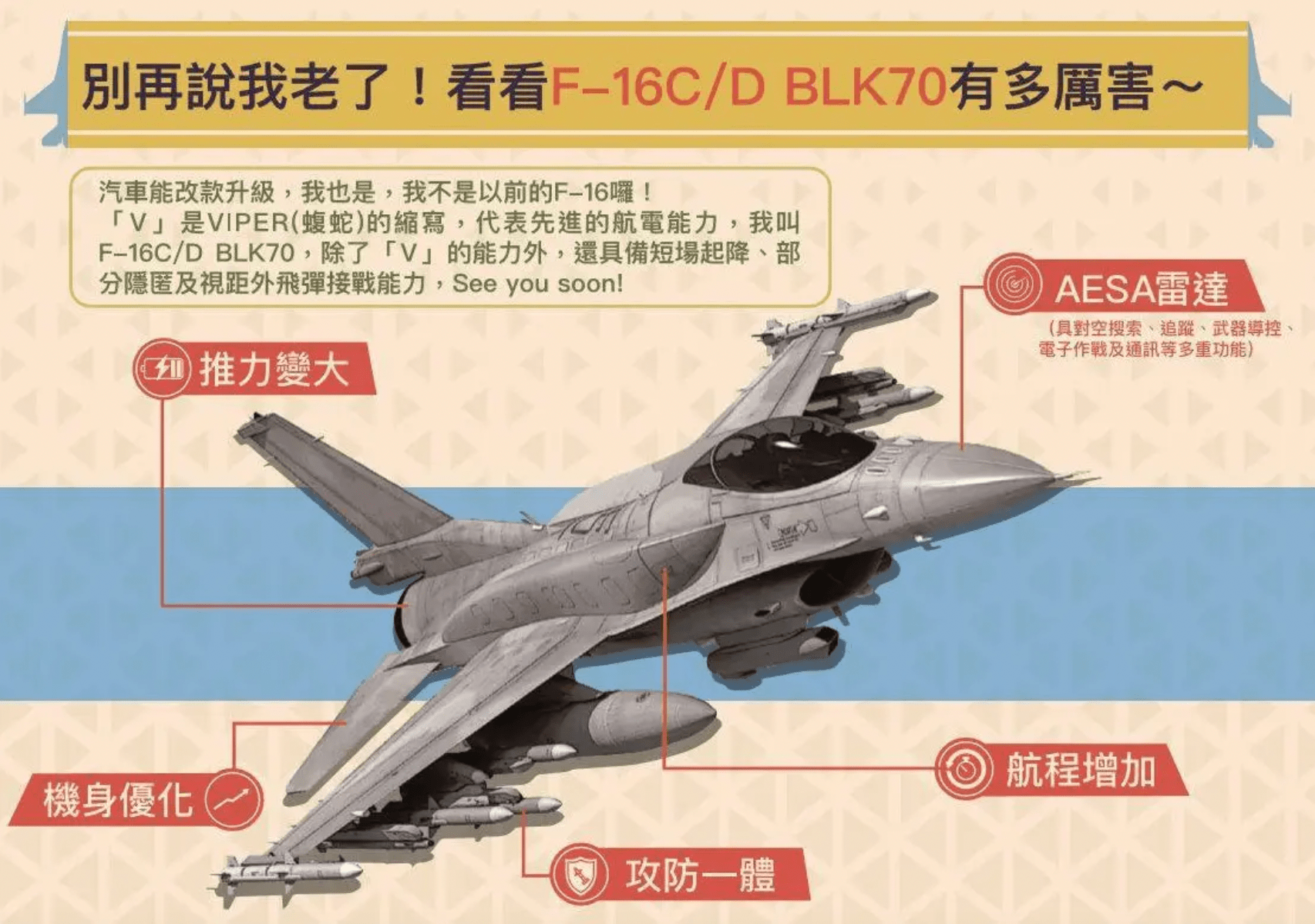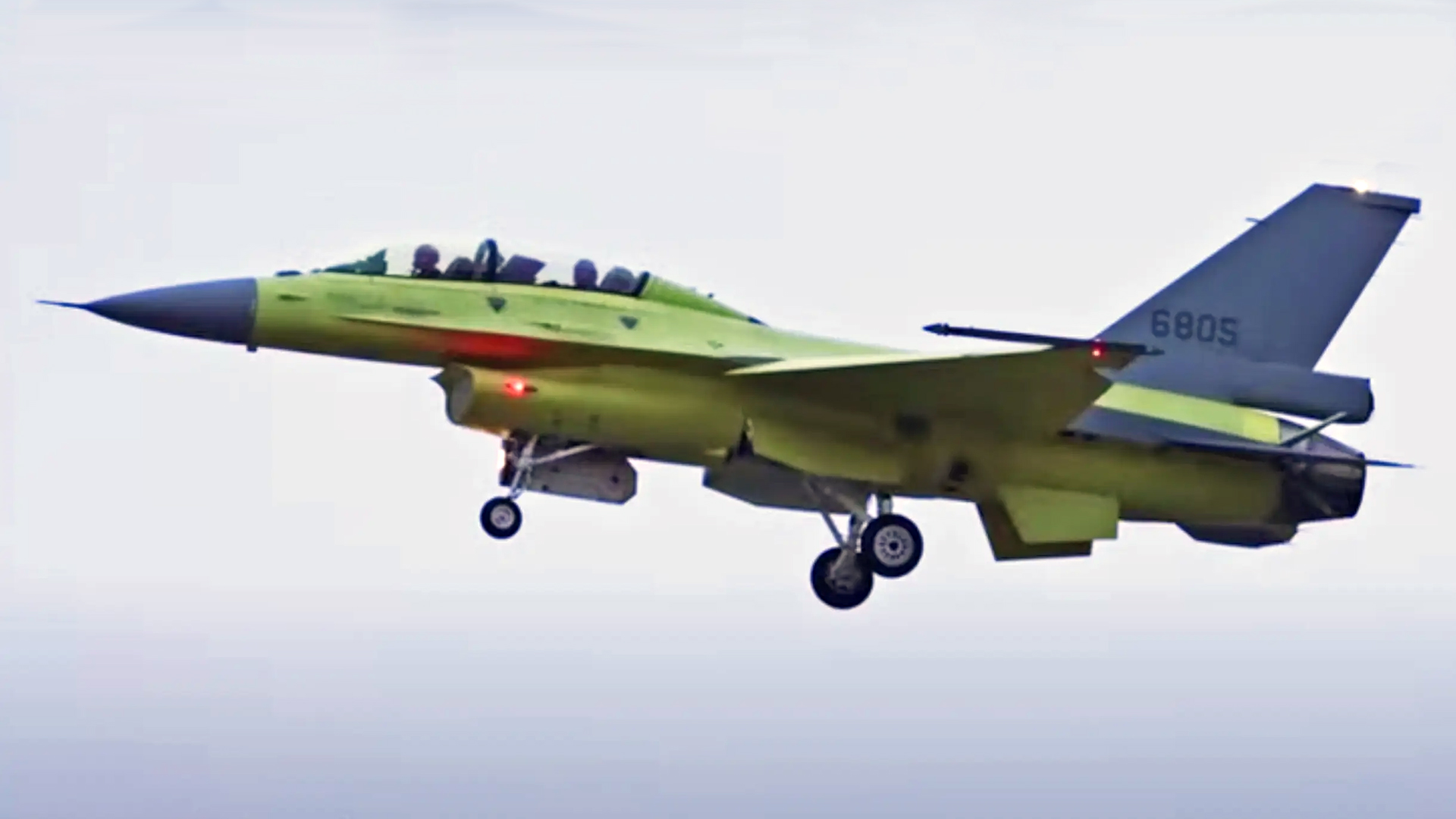Taiwan has completed flight testing on the last of its F-16 fighters to be upgraded to the F-16V standard under the Feng Zhan (Phoenix Rising) program. With this milestone, the Republic of China Air Force (ROCAF) is now on track to wrap up the F-16 modernization effort before the end of this year, by which time the last of 141 aircraft will have been upgraded. Taiwan was the first F-16 operator anywhere in the world to field combat-capable F-16Vs.

An unnamed Taiwanese military official confirmed that flight tests of the last upgraded F-16V — a two-seater, with the serial 6805 — were completed last weekend, the semi-official Central News Agency reported. The same official said that some modification work was still ongoing as part of the project but would be completed by late December.
The total cost of the Phoenix Rising modernization program is reportedly around $4.5 billion, with work having started in 2016. As originally planned, the ROCAF expected to receive a total of 144 F-16Vs, produced via conversion of its existing F-16A/B jets, but this figure has been reduced to 141 through attrition in its existing F-16 fleet.
It’s worth noting that the 150 original F-16A/B jets for Taiwan were already built to a unique specification. They were designated as Block 20 aircraft, produced by what was then General Dynamics. They featured the improved AN/APG-66(V)3 radar similar to the V2 found in the Mid-Life Update (MLU) aircraft but with a continuous-wave illumination function for the AIM-7 Sparrow air-to-air missile. A specific identification friend or foe (IFF) was fitted for Taiwanese requirements and the ROCAF aircraft are also compatible with the Raytheon AN/ALQ-183 electronic countermeasures pod, used in preference to the AN/ALQ-131.

The first two ROCAF F-16Vs were upgraded by Lockheed Martin in the United States and the first of these took to the air in October 2015. These two jets then served as pattern aircraft for Taiwan’s Aerospace Industry Development Center (AIDC), which undertook the remaining upgrades locally. In August 2020, AIDC also established a new F-16 repair, maintenance, and overhaul hub in Taiwan, the largest fleet of its kind in Asia.
While the F-16V name is applied almost universally to the modernized aircraft, AIDC refers to them as F-16A/B Block 20 MLUs.
In November 2021, as we reported at the time, Taiwan officially introduced to service its first wing of upgraded F-16Vs, at Chiayi Air Base in the southwest of the country. According to reports, 64 of the jets had been upgraded by this point.


While the ROCAF’s F-16V remains absolutely a fourth-generation fighter, the upgrade work brings a range of advanced capabilities, as we’ve discussed in the past.
At the center of the F-16V’s revised avionics suite is the Northrop Grumman AN/APG-83 Scalable Agile Beam Radar (SABR), with an active electronically scanned array (AESA). This provides the jet with much-improved detection and engagement ranges, fidelity, ability to spot low-flying small signature targets (like cruise missiles), and electronic countermeasure resistance. It’s also more reliable, without any components needed to physically move the array around. You can read more about the specific advantages of the SABR in this previous feature of ours.

Information gathered by the SABR, and from other sensors, is presented to the F-16V’s pilot on a new center pedestal display, which enhanced tactical situational awareness.
The F-16V airframe has also undergone modifications, including strengthened landing gear, that allow it to carry a wider range of munitions, as well as heavier fuel and weapons loads.
In addition to the AGM-84 Harpoon missile, already carried by Taiwanese F-16s for anti-shipping missions, the F-16V adds the AGM-88 High-Speed Anti-Radiation (HARM) missile for defense suppression, the AGM-154 Joint Stand-Off Weapon (JSOW), and the Standoff Land Attack Missile Expanded Response (SLAM-ER). With a range of 170 miles, the SLAM-ER is an especially important weapon, allowing highly accurate long-range precision strikes and likely offering capabilities above and beyond those offered by the locally made Wan Chien standoff missile.

More recently, there have been reports that Taiwan is buying AGM-158 Joint Air-to-Surface Standoff Missiles, or JASSMs, to arm its F-16Vs. This would be a highly significant development, with the JASSM boasting a host of advanced features including very low observability (stealth) and passive infrared target-matching/homing. Even against the most modern Chinese air defenses, the JASSM is a formidable proposition, with a high degree of survivability and accuracy, as well as superior resistance to electronic warfare, including GPS jamming. JASSM also has very long reach, with the basic version having a range of almost 250 miles, while its extended-range cousin, the JASSM-ER can reach out to nearly 600 miles. Still, a potential JASSM deal would be a major geopolitical move and has yet to be confirmed.
With its expanded armory and enhanced avionics, the F-16V will spearhead the ROCAF fighter fleet, but it won’t do it alone, with Taiwan also acquiring 66 new-build Block 70 F-16C/D jets, which are new production aircraft with a similar general configuration to the F-16V. The first deliveries of these jets were due to begin in 2023 but have been delayed until next year due to “technical problems and bottlenecks.”

Still, Washington’s approval to sell Block 70 jets to Taiwan was a major milestone in itself, with Beijing long having considered such a deal as a ‘red line’ issue that would seriously threaten its relations with the United States. While Taiwan had long campaigned for more advanced F-16 versions, resistance from successive U.S. administrations means that the ROCAF was restricted to the earlier F-16A/B jets, albeit more recently upgraded to the F-16V standard.
The importance of Taiwan’s expanding F-16 fleet is also growing as it continues to rationalize its combat aircraft fleet. The ROCAF’s aging F-5E/F Tiger II jets are due for retirement before the end of the year, while the unique RF-5E Tigergazer reconnaissance aircraft will also be partially replaced by pod-equipped F-16s.

Smaller fleets of F-CK-1 Indigenous Defense Fighters (IDFs) and Mirage 2000-5s make up the rest of the ROCAF combat jet fleet, with the IDFs having been modernized and with consideration now being given to upgrade the Mirages, too.
All these investments are seen as vital if the ROCAF is to keep pace with the technological changes afoot on the other side of the Taiwan Strait. While Taiwan will never be able to compete with the People’s Liberation Army in terms of aircraft numbers, in recent years developments in China have also seen that country make huge advances in terms of qualitative capabilities. The flagship for the People’s Liberation Army Air Force (PLAAF) modernization efforts is the J-20 stealth fighter, although the air arm as a whole is rapidly introducing other advanced crewed aircraft and drones, as well as sophisticated weapons, avionics, and new concepts of operations.

The heightened activity by People’s Liberation Army aircraft and warships in the Taiwan Strait, and increasingly around the island itself, is a stark reminder of the scale of the threat that the ROCAF faces.
Officials in Taiwan and the United States have also made increasingly pessimistic statements about Beijing’s plans for what it views as a breakaway province that must eventually be reincorporated.
In October 2021, Taiwanese Minister of Defense Chiu Kuo-cheng said that, while China was already capable of doing so, it would be fully prepared to launch a full-scale invasion of the island by 2025. Testifying to the Senate Armed Services Committee earlier in 2021, U.S. Navy Adm. Phil Davidson said that China likely aimed to invade Taiwan “in the next six years.”
As Taiwan seeks to counter China’s rapidly developing airpower capabilities, and better defend itself against a potential invasion from the mainland, the F-16 — upgraded and soon also new-build jets — will be a fundamental part of the ROCAF’s inventory for many years to come.
Contact the author: thomas@thedrive.com
